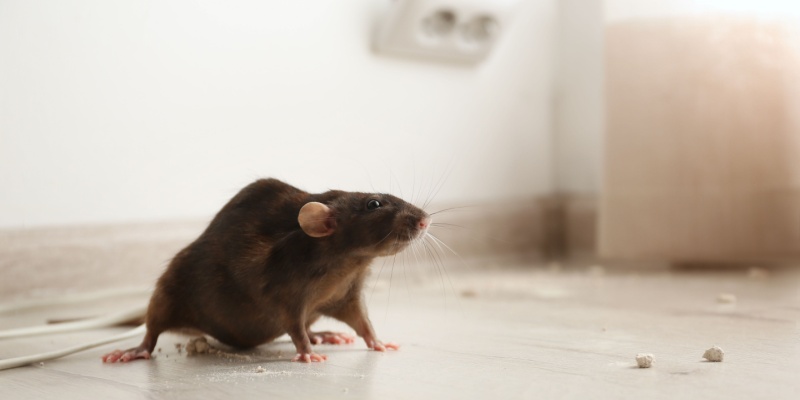New York City is a place where dreams are pursued and ambitions are realized. Yet, amidst the city's vibrancy lies a persistent challenge that plagues apartment building managers and residents alike: rats. For those tasked with managing New York apartment buildings, rodent infestations are not just a nuisance but a pressing concern that requires proactive measures to address. Let’s look at why rats are a significant issue for New York apartment building managers and what steps can be taken to mitigate this problem.
The Rat Conundrum in New York City
Rats have long been synonymous with urban life, and New York City is no exception. With its dense population, labyrinthine infrastructure, and abundant food sources, the city provides an ideal habitat for rats to thrive. Apartment buildings, with their interconnected spaces and numerous entry points, are particularly susceptible to infestations. Rats can enter buildings through cracks in the foundation, gaps around pipes, and even through sewers. Once inside, they can quickly multiply, turning a minor issue into a full-blown infestation.
The Impact on Apartment Building Managers
For apartment building managers, rat infestations pose a multitude of challenges and risks:
1. Health Hazards
Rats are known carriers of various diseases, including leptospirosis, salmonellosis, and rat-bite fever. Their feces, urine, and saliva can contaminate surfaces and food, posing health risks to residents and staff.
2. Property Damage
Rats are voracious chewers and can cause significant damage to buildings, including gnawing on electrical wiring, plumbing, insulation, and structural elements. This damage compromises the integrity of the building and poses fire and safety hazards.
3. Reputation Damage
A rat infestation can tarnish an apartment building's reputation, leading to negative reviews, decreased property values, and difficulties attracting and retaining tenants. Residents may feel unsafe and dissatisfied with their living conditions, leading to increased turnover and vacancies.
4. Regulatory Compliance
Apartment buildings in New York City are subject to various health and housing regulations, including those pertaining to pest elimination and sanitation. Failure to address rat infestations promptly and effectively can result in fines, violations, and legal liabilities for building managers.
Addressing the Rat Problem
While rats may seem like an insurmountable challenge, there are steps that apartment building managers can take to mitigate the problem:
1. Regular Inspections
Conduct routine inspections of the building's exterior and interior to identify signs of rat activity, such as droppings, gnaw marks, burrows, and nesting materials. Focus on areas with high moisture levels, food debris, and clutter, as these are prime habitats for rats.
2. Sealing Entry Points
Seal any gaps, cracks, and openings in the building's exterior to prevent rats from gaining access. Pay particular attention to areas around pipes, vents, doors, windows, and utility lines. Use materials like steel wool, wire mesh, and caulk to block potential entry points.
3. Sanitation Practices
Implement strict sanitation practices to eliminate food sources and attractants for rats. Ensure that garbage bins are securely closed and regularly emptied and that food waste is disposed of properly. Clean up spills and crumbs promptly, and store food in sealed containers.
4. Pest Elimination Measures
Work with professional pest experts to develop a comprehensive rodent elimination plan tailored to your building's specific needs. This plan may include baiting, trapping, exclusion, and habitat modification strategies to reduce rat populations and prevent reinfestations.
5. Tenant Education
Educate residents about the importance of proper sanitation and hygiene practices in preventing rat infestations. Provide information on how to report signs of rat activity and encourage collaboration in implementing preventive measures.
6. Collaboration with Authorities
Establish partnerships with local authorities, community organizations, and neighboring buildings to address rat infestations collectively. Coordinate efforts to identify and eliminate rat harborage sites, implement rodent elimination measures, and promote public awareness campaigns.
Challenges to Rat Elimination
However, managing rat infestations in New York City apartment buildings is not without its challenges. The transient nature of urban life means that even the most diligent efforts to eradicate pests may be thwarted by external factors beyond the control of building managers. Construction projects, nearby food establishments, and changes in weather patterns can all influence the movement and behavior of rats, making it difficult to predict and prevent infestations. Moreover, the dense population and complex infrastructure of the city can hinder access to certain areas of the building, making it challenging to identify and address hidden nesting sites. In light of these challenges, collaboration and communication are essential. Building managers should work closely with residents to foster a sense of community responsibility and encourage active participation in pest management efforts. Working closely with experts such as Systematic Pest Elimination can ensure complete control over these pests.
In conclusion, rats are indeed a significant issue for New York apartment building managers, posing health risks and property damage. However, with the help of Systematic Pest Elimination, these problems can be effectively addressed through comprehensive pest elimination solutions tailored to the specific needs of each building. By staying vigilant and adaptable in the face of evolving challenges, and with the expertise and resources provided by Systematic Pest Elimination, building managers can ensure that their properties remain beacons of urban living in the heart of the Big Apple.

